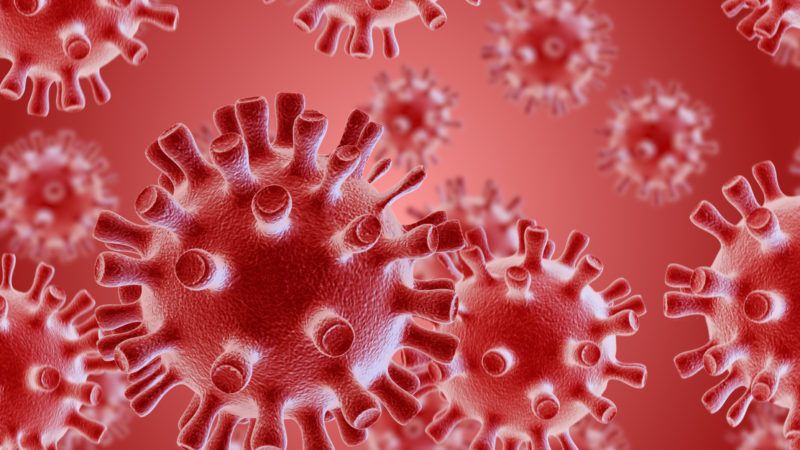If COVID-19 Herd Immunity Is 'Not Attainable,' Does It Matter?
The emphasis on a goal that may be impossible to reach reduces the incentive to get vaccinated.

When will COVID-19 herd immunity allow a return to normal life in the United States? Probably never, according to a New York Times story published today. But the Times says widespread immunity, especially among Americans who are most vulnerable to the disease, still can be expected to dramatically reduce hospitalizations and deaths.
Are you wondering what the practical difference is? So am I.
"Reaching 'Herd Immunity' Is Unlikely in the U.S., Experts Now Believe," the Times headline warns. Although "more than half of adults in the United States have been inoculated with at least one dose of a vaccine," health and science writer Apoorva Mandavilli reports, "daily vaccination rates are slipping, and there is widespread consensus among scientists and public health experts that the herd immunity threshold is not attainable—at least not in the foreseeable future, and perhaps not ever."
What is attainable? "Rather than making a long-promised exit," Mandavilli says, "the virus will most likely become a manageable threat that will continue to circulate in the United States for years to come, still causing hospitalizations and deaths but in much smaller numbers." That sounds like a win to me.
The Association for Professionals in Infection Control and Epidemiology says "herd immunity (or community immunity) occurs when a high percentage of the community is immune to a disease (through vaccination and/or prior illness), making the spread of this disease from person to person unlikely." As a result of immunity from vaccination or prior infection, "even individuals not vaccinated (such as newborns and the immunocompromised) are offered some protection because the disease has little opportunity to spread within the community."
The distinction drawn by the Times therefore hinges on exactly how "unlikely" virus transmission becomes and how much protection qualifies as "some." In a "rough guide" to herd immunity published by the journal Clinical Infectious Diseases in 2011, British epidemiologists Paul Fine, Ken Eames, and David Heymann noted that the term "is widely used but carries a variety of meanings." Still, "a common implication of the term is that the risk of infection among susceptible individuals in a population is reduced by the presence and proximity of immune individuals."
A simple definition of herd immunity is based on the formula 1 – 1/R0, where R0 (the "basic reproduction number") represents the number of people infected by a typical carrier at the outset of an epidemic. Assuming that immunity is evenly distributed across the population and the R0 is 3, for example, the threshold would be about 67 percent. At that point, Fine et al. say, "incidence of the infection would decline."
According to one estimate, the basic reproduction number for COVID-19 in the United States at the outset of the epidemic was about 4, which implies a herd immunity threshold of about 75 percent. Mandavilli notes that most epidemiologists initially thought the threshold would be somewhere between 60 and 70 percent. But after taking into account new, more contagious coronavirus variants (which raise the basic reproduction number), she says, "experts now calculate the herd immunity threshold to be at least 80 percent." And "if even more contagious variants develop," she adds, "the calculation will have to be revised upward again."
It is hard to say how close the U.S. is to any of those numbers, since some but not all Americans who were infected by the COVID-19 virus (often without realizing it, assuming their symptoms were mild or nonexistent) also have been vaccinated. Data scientist Youyang Gu, whose COVID-19 projections have been influential and unusually accurate, estimated that 53 percent of the population would be immune by May 1, rising to 64 percent by late November. Gu has stopped updating that estimate, and his reasoning is instructive.
"Theoretical herd immunity is unrealistic and should not be the endgame," Gu said on Twitter in late February. "The endgame is the widespread availability of COVID-19 vaccines that virtually eliminates severe illness. And we are just a few months away from reaching that goal."
Even without crossing the threshold emphasized by the Times, the number of active COVID-19 cases in the United States, according to Worldometer's numbers (which include only verified infections), has fallen by 26 percent since late January. During the same period, the seven-day average of daily deaths fell by nearly 80 percent. The seven-day average of newly identified cases has fallen by 80 percent since mid-January. All that happened even as many states were relaxing or removing COVID-19 restrictions such as face mask mandates and occupancy limits.
Those trends suggest it is a mistake to equate controlling the epidemic with reaching herd immunity as traditionally defined by epidemiologists. "People were getting confused and thinking you're never going to get the infections down until you reach this mystical level of herd immunity, whatever that number is," Anthony Fauci, the Biden administration's top COVID-19 adviser, told the Times.
When a quarter of Americans still say they do not plan to get vaccinated, that confusion is not likely to help matters. If people at low risk from COVID-19 assume that returning to normal requires herd immunity, which epidemiologists say is impossible, that only weakens the incentive to get vaccinated.
"When can we return to normal?" Gu asked in February. "Forget about 'herd immunity.' By summer, everybody who wants a vaccine will be able to get one. The vulnerable population will long have been able to receive their shots. Hospitalizations & deaths will be at negligible levels. Normality will happen…with or without herd immunity."
